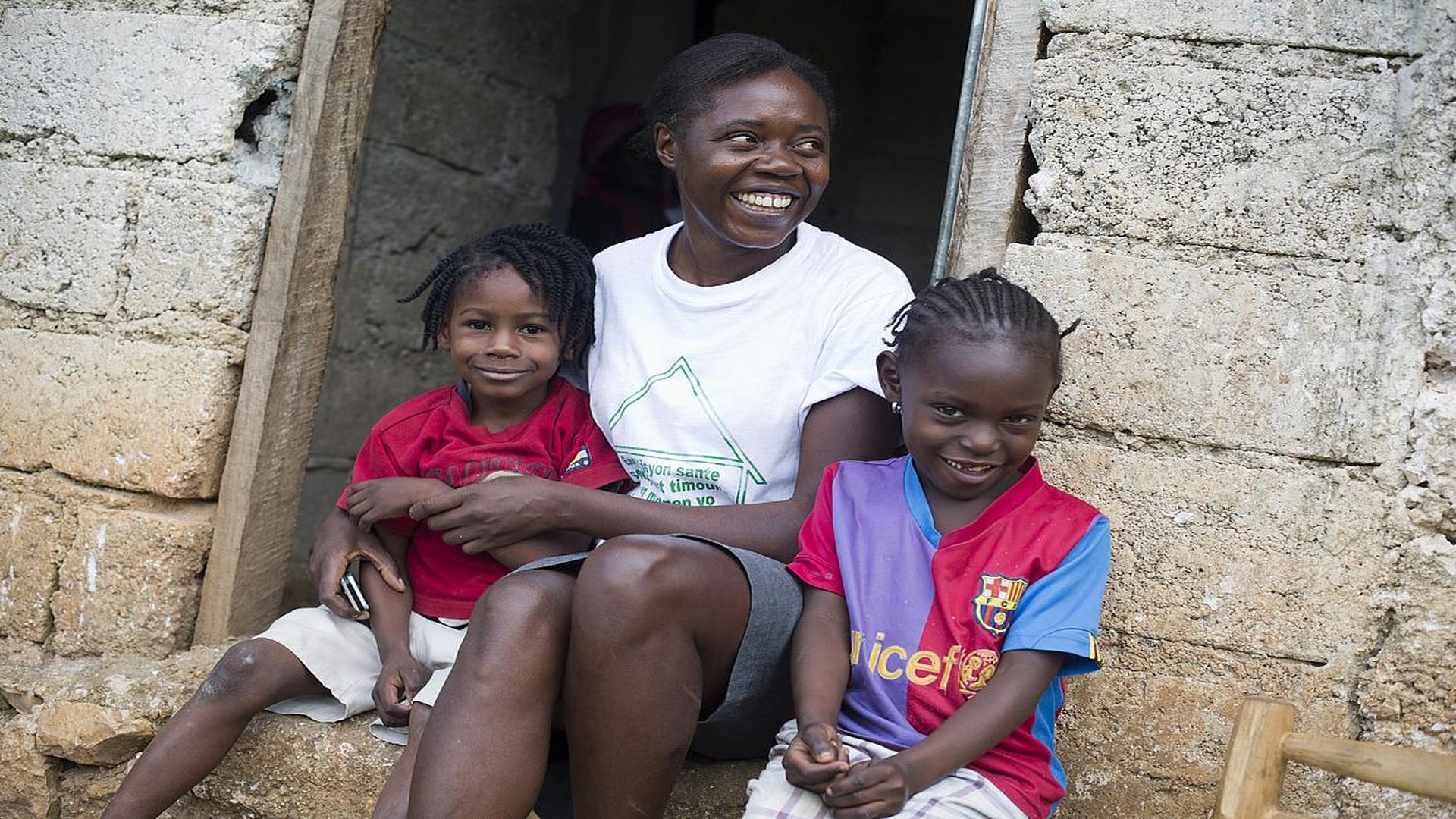15 Years Later, PEPFAR Continues to Save Lives


Ketcia, a community health worker, sits with children during a PEPFAR-sponsored home healthcare visit in Robin, Haiti. Courtesy of David Rochkind/USAID
Experts from the National Institute of Allergy and Infectious Diseases (NIAID), part of the National Institutes of Health, have penned a New England Journal of Medicine perspective recognizing the United States President’s Emergency Plan for AIDS Relief (PEPFAR) for 15 years of implementing an innovative program to prevent, treat, and care for persons living with HIV and AIDS. The authors stress that continued support for the U.S. State Department program is necessary to ensure an effective global response to the HIV pandemic and to set a precedent for addressing other infectious diseases worldwide.
PEPFAR has demonstrated remarkable success providing HIV services in regions of the world hardest hit by the pandemic, especially in eastern and southern Africa. Between its launch in 2003 and September 2017, PEPFAR-funded programs delivered antiretroviral therapy to more than 13.3 million men, women and children; voluntary medical male circumcision to reduce the risk of HIV acquisition to more than 15.2 million men; prenatal care that led to the prevention of 2.2 million perinatal HIV infections; and support for more than 6.4 million orphans and other vulnerable children impacted by HIV. The authors report the U.S. investment in PEPFAR also yields profound indirect benefits by fostering a humanitarian reputation for the United States abroad and better preparing health systems in developing countries to respond to disease outbreaks.
In the commentary, the authors recount the circumstances in which PEPFAR was conceived more than 15 years ago. Research supported by the NIH and others had led to the development of antiretroviral drugs and treatment regimens that increased life expectancies among people diagnosed with HIV from years to decades, and drastically reduced AIDS deaths in resource-rich nations. However, millions of people in resource-limited nations continued to die without access to adequate therapy. Seeing an opportunity to reduce suffering, President George W. Bush established a program to share the benefits of these scientific breakthroughs and other HIV services to prevent infections and treat people in 14 nations with high rates of HIV infection and AIDS deaths. Today, the program has expanded to more than 50 countries and has been instrumental in putting many communities on track for epidemic control and ultimately, ending the HIV pandemic.
Reference: Fauci AS, et al. PEPFAR-15 years and counting the lives saved. New England Journal of Medicine DOI: 10.1056/NEJMp1714773 (2018).
Source: National Institutes of Health (NIH)
Robust infectious disease surveillance, including rapid subtyping of influenza A, is essential for early detection, containment, and public health reporting of novel viral threats.